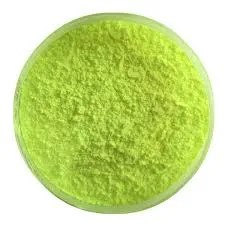The Role of Antioxidants in Polymer Additives Enhancing Performance and Durability
Polymers have become an integral part of modern life, used in everything from packaging materials to automotive parts and medical devices. However, like any material, polymers are prone to degradation when exposed to environmental factors such as heat, light, and oxygen. This degradation can adversely affect their mechanical properties and longevity. To combat these issues, manufacturers often incorporate antioxidants into polymer additives, which serve to enhance the performance, durability, and shelf-life of polymer products.
Understanding Antioxidants
Antioxidants are substances that can prevent or slow the oxidation of other molecules. In the context of polymers, oxidation is a chemical reaction that can lead to the breaking of molecular chains, resulting in loss of mechanical strength, color change, and embrittlement. The oxidation process is usually initiated by factors such as heat, UV light, or the presence of transition metals, which can act as catalysts. By introducing antioxidants into the polymer matrix, manufacturers can significantly reduce the rate of oxidation and improve the material's stability and performance under various conditions.
Types of Antioxidants Used in Polymers
There are two primary categories of antioxidants used in polymer additives primary antioxidants and secondary antioxidants.
1. Primary Antioxidants These are typically radical scavengers that can react with free radicals formed during the oxidation process, effectively neutralizing them. Common primary antioxidants include hindered phenols and amines, which are widely used due to their effectiveness and compatibility with a variety of polymers.
2. Secondary Antioxidants These compounds work by preventing the formation of free radicals rather than neutralizing them. They often include phosphites and thioesters, which can be used in conjunction with primary antioxidants to provide a synergistic effect, enhancing overall protection.
Both types of antioxidants can be tailored to specific applications, depending on the polymer type and the environmental conditions it will face. The choice of antioxidant additive often depends on factors such as the processing conditions, the final application of the polymer, and the expected lifespan of the product.
Benefits of Incorporating Antioxidants
antioxidants polymer additives

Integrating antioxidants into polymer compositions yields several critical benefits
- Extended Lifespan The primary advantage is the increased longevity of polymer products. By minimizing oxidative degradation, antioxidants can significantly prolong the service life of plastic materials used in outdoor applications, including automotive components and construction materials.
- Improved Mechanical Properties Antioxidants help maintain the mechanical properties of polymers during their lifespan. In the absence of proper protection, polymers can become brittle and lose their elasticity, thereby compromising their functionality.
- Enhanced Thermal Stability Antioxidants improve the thermal stability of polymers, allowing them to withstand higher processing temperatures during manufacturing without experiencing degradation.
- Color Maintenance Many polymers are subject to discoloration due to oxidative processes. Antioxidants can help preserve the original color and aesthetic qualities of the material, which is particularly vital in consumer goods and packaging.
Environmental Considerations
While the benefits of using antioxidants in polymer additives are substantial, it is essential to consider their environmental impact. Many traditional antioxidants have raised concerns regarding toxicity and environmental persistence. As awareness of these issues has grown, manufacturers have begun seeking alternative solutions. This has led to the development of bio-based and eco-friendly antioxidants, which can provide similar protective benefits while minimizing adverse effects on human health and the environment.
Conclusion
The integration of antioxidants into polymer additives is crucial for enhancing the performance and longevity of polymer products. As the demand for more sustainable and durable materials continues to grow, the industry must remain vigilant in its selection of antioxidant additives. Future research and development efforts aimed at discovering new, environmentally friendly antioxidant options will play a pivotal role in advancing polymer technology. In this way, innovations in antioxidant chemistry will not only contribute to longer-lasting and more effective polymer applications but also align with the global movement toward sustainability.

